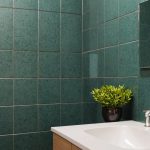Air quality significantly impacts your health and comfort. In the UK, allergens like dust mites, pollen, and pet dander can aggravate respiratory issues. Implementing effective air purification strategies can help create a cleaner living environment. From choosing the right air purifier to regularly maintaining your heating and cooling systems, discover practical tips that can drastically reduce allergens in your home. Transform your space into a haven by embracing these air purification techniques today.
Understanding Allergens in the UK Environment
Indoor air quality significantly affects health, particularly due to the presence of allergens. In the UK, common allergens include dust mites, pet dander, mould spores, and pollen. These allergens thrive in homes, especially in poorly ventilated areas, impacting those with allergies or asthma.
Seasonal variations also play a critical role. For instance, pollen levels rise in spring and summer, exacerbating symptoms for many. In contrast, mould spores are more prevalent in autumn and winter, thriving in damp conditions. Understanding these patterns can help manage symptoms effectively.
Statistics reveal that around 30% of the UK population suffers from allergies, a figure that highlights the importance of addressing indoor air quality. Poor air quality can exacerbate these conditions, leading to increased healthcare visits and reduced quality of life.
To combat these allergens, maintaining a clean and well-ventilated home is essential. Regular cleaning reduces dust mites and pet dander, while air purifiers can help filter out pollen and mould spores. By understanding and managing these common allergens, individuals can significantly improve their indoor air quality and overall health.
Effective Air Purification Methods
Choosing the right air purification methods can significantly enhance indoor air quality. Among these, HEPA filters stand out due to their high efficiency. HEPA, which stands for High-Efficiency Particulate Air, can capture 99.97% of particles as small as 0.3 microns. This makes them particularly effective against allergens like dust mites, pollen, and pet dander.
When considering air purifiers, it's crucial to understand the different types available. HEPA-based purifiers are popular for their ability to remove tiny particles. In contrast, activated carbon purifiers excel at eliminating odours and volatile organic compounds (VOCs), though they are less effective against larger particles. UV-C purifiers use ultraviolet light to kill bacteria and viruses but may not remove allergens.
Maintaining air purifiers is essential for optimal performance. Regularly replacing filters ensures the device continues to function effectively. For HEPA filters, this typically means a change every 6 to 12 months, depending on usage and air quality. Additionally, keeping the purifier clean and ensuring it operates in the correct room size can maximise its benefits. By understanding and implementing these methods, individuals can significantly improve their indoor air quality.
Choosing the Right Air Purifier for Your Home
Selecting the best air purifiers for your home requires careful consideration of several factors. First, assess the size of the area you wish to purify. Air purifiers have different capacities, so choosing one that matches your room size ensures optimal performance. Additionally, consider the specific allergens you wish to target. If you're dealing with dust mites or pollen, a HEPA filter is highly recommended. However, if odours are a concern, an activated carbon filter may be more suitable.
In the UK market, some top-rated air purifiers include the Dyson Pure Cool, which is praised for its dual functionality as a fan and purifier, and the Philips Series 3000i, known for its smart sensing technology. These models have garnered positive user reviews, highlighting their efficiency and ease of use.
When evaluating air purifier reviews, pay attention to customer feedback regarding noise levels, maintenance requirements, and energy consumption. This information can provide valuable insights into the long-term satisfaction of other users. By considering these factors and reviewing user feedback, you can make an informed decision and choose the most suitable air purifier for your home.
Additional Strategies to Minimize Allergens
Minimizing allergens in the home is crucial for those seeking relief from allergies. One effective strategy is regular cleaning and dusting. This practice helps to reduce allergens like dust mites and pet dander, which can accumulate in carpets, upholstery, and curtains. Ensuring that these areas are cleaned frequently can significantly lessen allergen buildup.
Controlling the humidity levels in your home is another vital aspect of allergy prevention. High humidity can create an ideal environment for mould growth, while low humidity can increase dust mite populations. Using a dehumidifier or air conditioner can help maintain optimal humidity levels, typically between 30-50%, thus reducing allergens.
Preventive measures for common allergens are also essential. For instance, regular grooming and bathing of pets can help control pet dander. Additionally, using allergen-proof mattress and pillow covers can protect against dust mites. For mould, ensuring proper ventilation in damp areas like bathrooms and kitchens is key.
By implementing these home maintenance strategies, individuals can create a healthier living environment, effectively reducing allergens and enhancing overall well-being.
Natural Remedies for Air Quality Improvement
Exploring natural air purification methods can enhance indoor environments effectively. Indoor plants are a popular choice for improving air quality, as they absorb pollutants and release oxygen. Plants like the spider plant, peace lily, and snake plant are particularly effective at removing toxins such as formaldehyde and benzene from the air. They not only freshen the atmosphere but also add a touch of nature to your home decor.
Essential oils offer another natural solution for a fresher indoor environment. Oils like lavender, eucalyptus, and tea tree have properties that can purify the air and provide a calming scent. When diffused, they release aromatic compounds that can neutralize odours and even possess antimicrobial benefits, contributing to a healthier living space.
These natural methods can complement mechanical air purification systems. While air purifiers efficiently remove particles, natural remedies add an additional layer of freshness and health benefits. Combining these methods creates a holistic approach to air quality improvement, ensuring cleaner, more breathable air. By integrating plants and essential oils into your home, you can enhance the effectiveness of your air purification strategy.
The Role of Ventilation in Air Quality
Proper home ventilation plays a crucial role in maintaining healthy indoor environments. By facilitating fresh air circulation, ventilation helps reduce indoor pollutants such as dust, mould spores, and volatile organic compounds (VOCs). This is particularly important in UK homes, where insulation and weatherproofing can sometimes limit natural airflow.
To ensure effective indoor air exchange, it's essential to incorporate best practices for ventilation. Opening windows regularly, even in colder months, can significantly improve air circulation. Installing trickle vents or mechanical ventilation systems in areas like kitchens and bathrooms can further enhance airflow, preventing moisture buildup and reducing allergen presence.
Balancing ventilation with energy efficiency is another critical consideration. While increasing airflow is necessary, it shouldn't lead to excessive energy loss. To achieve this balance, consider using heat recovery ventilation (HRV) systems. These systems retain heat while exchanging stale indoor air with fresh outdoor air, maintaining comfortable temperatures without compromising air quality.
By prioritising home ventilation and adopting these strategies, you can effectively manage indoor air quality, ensuring a healthier living environment. This approach not only reduces allergens but also supports overall well-being by promoting a continuous supply of fresh air.
Educating Your Household on Allergens
Raising allergy awareness within your family is crucial for maintaining a low-allergen home environment. Begin by discussing common allergens such as dust mites, pet dander, and pollen, explaining how they impact health. This foundational knowledge empowers each family member to contribute to reducing exposure.
Family education can be achieved through interactive activities. Consider organising a family meeting to discuss allergens and their effects. Use visual aids like charts or infographics to illustrate how allergens spread and the importance of regular cleaning. Encourage questions to ensure everyone understands and feels involved.
Teamwork is essential in maintaining a low-allergen home. Assign specific tasks to each family member, such as vacuuming, dusting, or monitoring humidity levels. This shared responsibility not only lightens the workload but also reinforces the importance of each person's role in allergy prevention.
For ongoing education, utilise resources such as online courses, informative videos, or local workshops on allergies and indoor air quality. These resources provide valuable insights and keep your family updated on the latest allergy management strategies. By fostering a well-informed household, you can effectively reduce allergen exposure and enhance overall well-being.
Monitoring and Testing Indoor Air Quality
Understanding and maintaining indoor air quality is essential for a healthy home environment. Various monitoring devices are available to help you keep track of air quality levels. These devices can measure pollutants such as particulate matter (PM2.5), carbon dioxide, and volatile organic compounds (VOCs). Some advanced models even provide real-time updates and integrate with smart home systems for seamless monitoring.
When it comes to air quality testing, knowing how to interpret the air quality index (AQI) is crucial. The AQI provides a numerical value that indicates the level of air pollution. A lower AQI score signifies better air quality, while higher scores indicate increased pollution levels. Understanding these readings helps you take timely action, such as increasing ventilation or using air purifiers.
Regular testing is vital for maintaining a healthy indoor environment. By consistently monitoring air quality, you can identify patterns and potential sources of pollution, allowing for targeted interventions. Employing these tools and understanding the data they provide ensures that you can effectively manage and improve the air quality in your home, promoting overall well-being.
Staying Informed on Allergens and Air Quality Trends
Keeping abreast of allergy trends UK is crucial for effectively managing allergies. Numerous resources provide valuable insights into current air quality news and developments. Websites like the UK Met Office and DEFRA offer real-time updates on pollen forecasts and pollutant levels, helping individuals plan their activities accordingly.
Understanding the importance of following health guidelines for air quality cannot be overstated. These guidelines, often issued by public health organisations, provide actionable advice on reducing exposure to allergens and pollutants. By adhering to these recommendations, individuals can better protect their respiratory health and mitigate allergy symptoms.
Community initiatives play a significant role in supporting allergy sufferers in the UK. Local support groups and online forums offer platforms for sharing experiences and strategies for managing allergies. Additionally, some communities organise workshops and events focused on raising health awareness and promoting best practices for maintaining good air quality.
By leveraging these resources and participating in community efforts, individuals can stay informed and proactive about their air quality and allergy management. This knowledge empowers them to make informed decisions and foster healthier living environments.
















